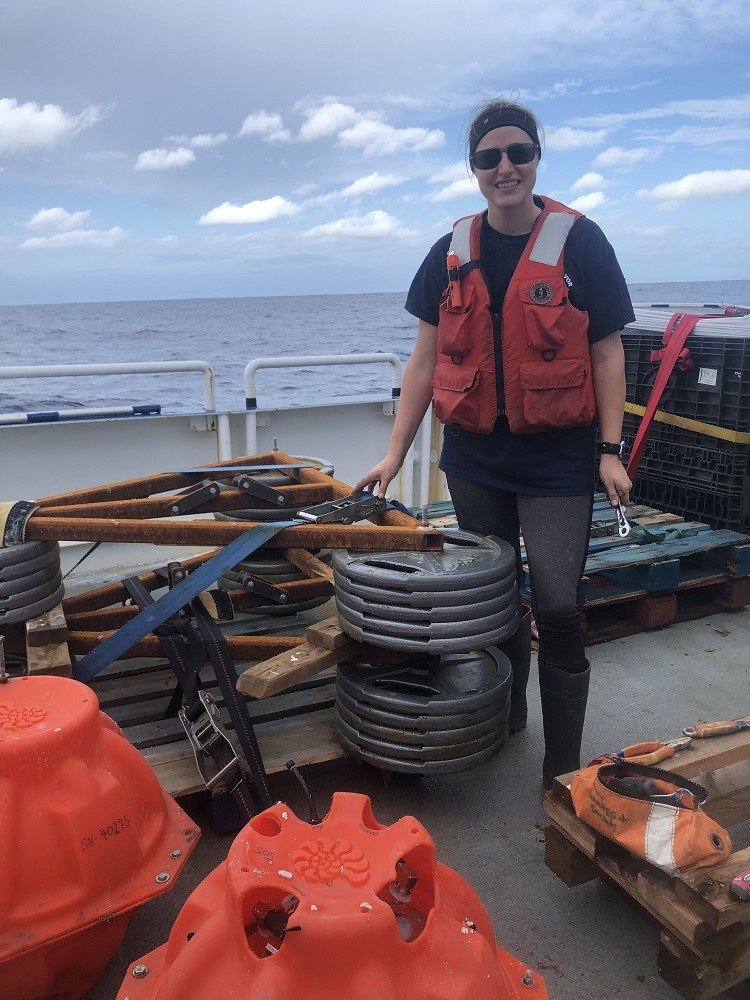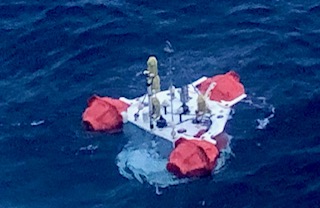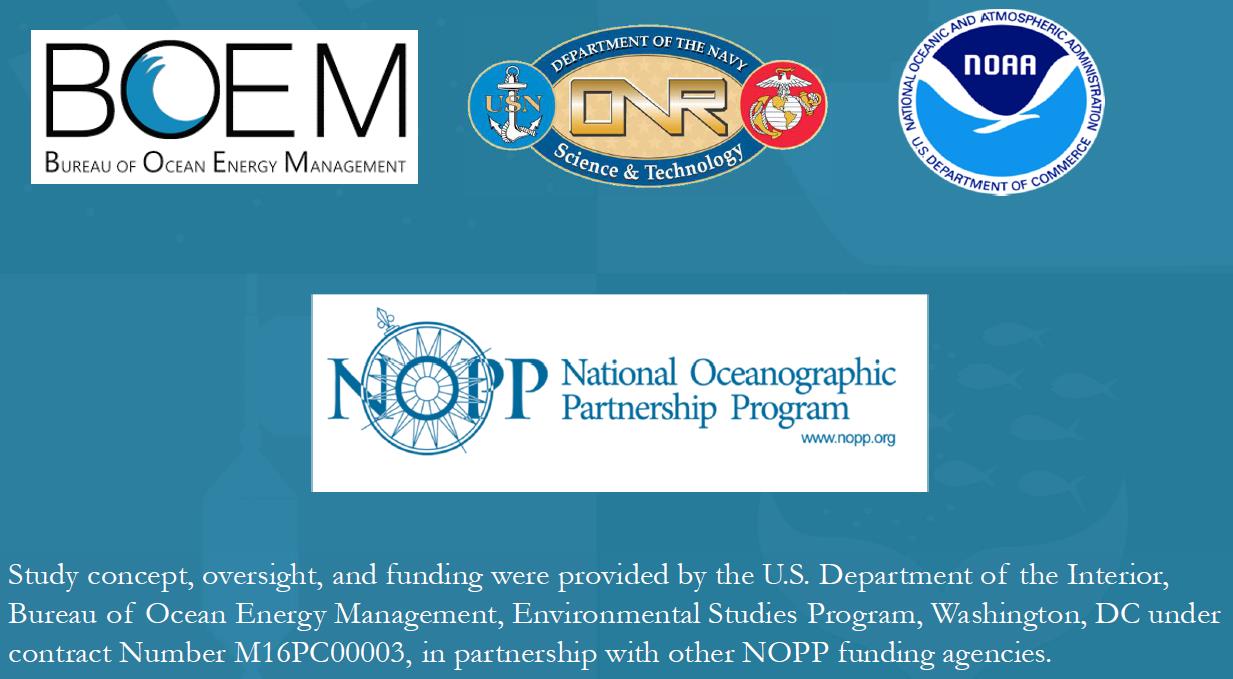This is Hali Rederer, graduate student from California State University Sacramento blogging for the second time on this ADEON scientific cruise. Eight days have flown by aboard the RV Endeavor, and we are almost at the halfway point of this cruise. Many highlights stand out to me from the four sites we have been to so far. My number one highlight was seeing a pilot whale while I was on marine mammal watch. Lander recovery and re-deployment is a significant part of the mission of this cruise. Another highlight is the ongoing learning about acoustic ecology and the lander itself. Especially interesting is the mechanism enabling its recovery from several hundred meters below the ocean surface (fig.1).

The lander platform was specifically designed for ADEON to carry the instruments for acoustic monitoring. The resulting data are used for understanding the soundscape patterns of marine mammal movement and human activity such as ship movement. The lander is triangular shaped on its bottom and a rectangular shape on top. Each triangle points holds 225 pounds in stacks of five 45-pound Olympic iron weights. These weights hold the lander on the ocean floor. Releasing the lander from the bottom of the ocean requires that the cabled weights are mechanically dropped. The lander is then buoyant enough to ascend to the ocean surface for recovery (fig.2). What precipitates the landers release from the ocean bottom is an acoustic signal to the lander through an instrument called a transducer lowered into the water from the ship.

Of additional interest are the fine-scale acoustic echo surveys carried out along transects and the net trawls for fish and invertebrates within each of the lander sites. These surveys ground truth the acoustic data and provide a snap shot of the species richness and the ecological context of each site. I am looking forward to the next three sites.


